While handheld gaming PCs aren’t a recent concept, they only really got a shot in the arm with the launch of Valve’s Steam Deck in 2022. The product has spawned a flurry of competitors, and even a rapid revision, the Steam Deck OLED. Its chief competition at the moment is the ASUS ROG Ally — so how do the two gaming machines stack up?
Steam Deck vs ASUS ROG Ally: At a glance
- Both have acceptable low-end models, but you should automatically upgrade if you can afford it.
- The Ally can run any Windows game that meets its specs, whereas the Steam Deck is limited to Steam titles unless you use workarounds.
- SteamOS provides a more seamless, console-like experience than the Ally’s software overlay.
- The Ally doesn’t have an OLED option, but offers superior performance and resolution, and even the option to dock with an eGPU.
- The absence of trackpads on the Ally could be a problem for people who like to play mouse-based PC games.
- The standard (Ryzen Z1 Extreme) version of the Ally is more expensive than the Steam Deck OLED.
Steam Deck vs ASUS ROG Ally: Specs
| Steam Deck OLED | ASUS ROG Ally (Z1 Extreme) | |
|---|---|---|
|
Operating system |
Steam Deck OLED
SteamOS |
ASUS ROG Ally (Z1 Extreme)
Windows 11 Home |
|
Processor |
Steam Deck OLED
AMD Aerith APU system-on-chip |
ASUS ROG Ally (Z1 Extreme)
AMD Ryzen Z1 Extreme
|
|
Storage |
Steam Deck OLED
512/1TB NVMe SSD |
ASUS ROG Ally (Z1 Extreme)
512GB NVMe SSD |
|
Display |
Steam Deck OLED
7.4-inch, 90Hz 1280×800 HDR OLED |
ASUS ROG Ally (Z1 Extreme)
7-inch, 120Hz 1920×1080 LCD
|
|
Connectivity |
Steam Deck OLED
Bluetooth 5.3 |
ASUS ROG Ally (Z1 Extreme)
Bluetooth 5.2 |
|
Memory |
Steam Deck OLED
16GB LPDDR5 RAM |
ASUS ROG Ally (Z1 Extreme)
16GB LPDDR5 RAM |
|
Battery |
Steam Deck OLED
50Whr (3-12 hours) |
ASUS ROG Ally (Z1 Extreme)
40Whr (2-6.8 hours) |
The first thing to note here is that we’ve gone with the most comparable models. While you can get still get a 256GB, LCD model of the Steam Deck, or a less powerful Ryzen Z1 version of the Ally — both of which cost about $400 as of this writing — the former is already outdated, and Valve knows it. The only reason it’s still available is to attract people who otherwise couldn’t afford anything. You’re getting a lot more bang for the buck with the Steam Deck OLED, or any version of the Ally, for that matter.
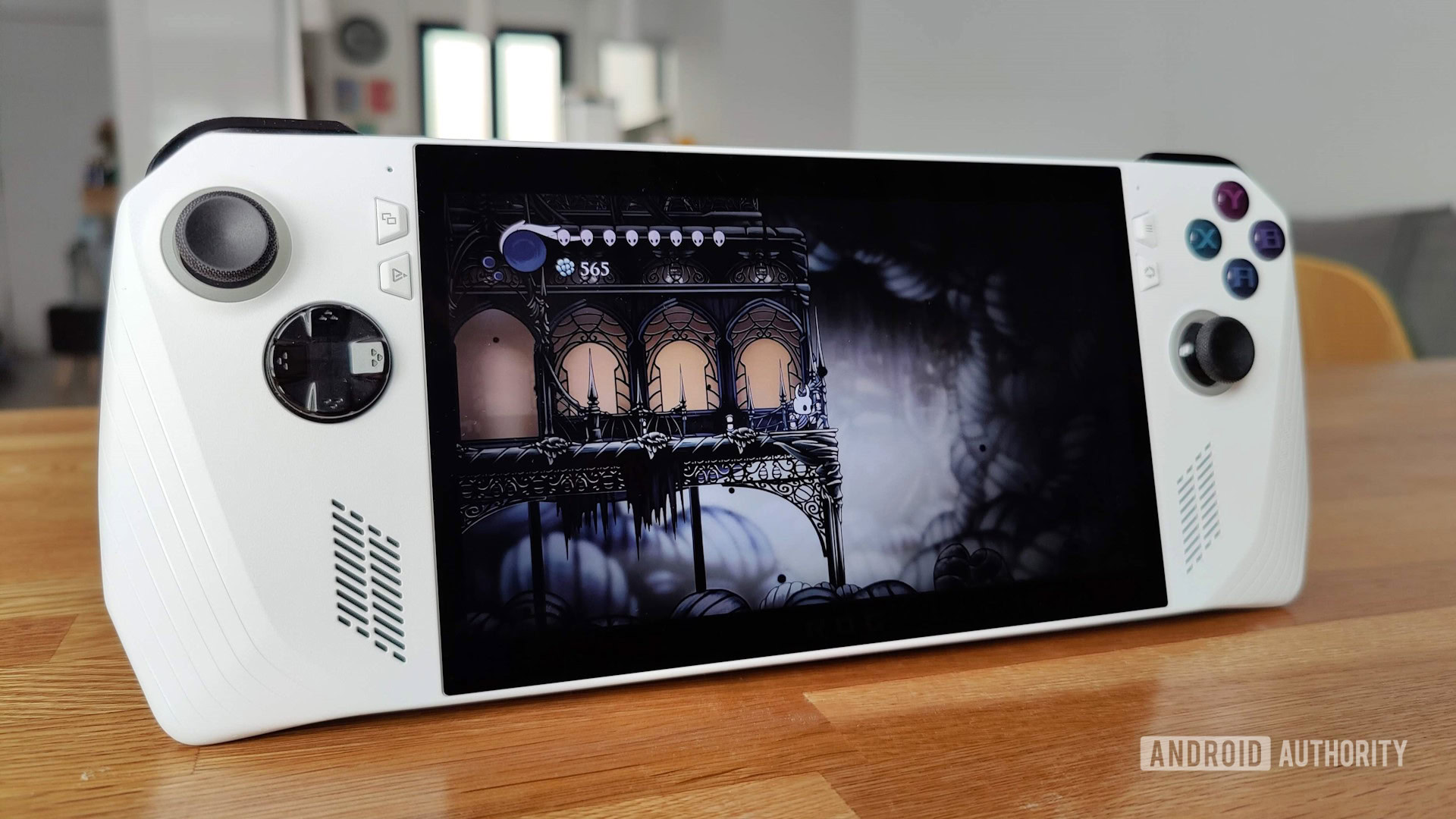
Nick Fernandez / Android Authority
When you compare the Steam Deck OLED against the Z1 Extreme Ally, the latter (above) is still the handheld to choose if performance trumps every other concern. You’ll see better framerates in just about every game. It might not matter very much if you stick to titles with 2D or simple 3D graphics, like Hollow Knight or Dave the Diver, but you’ll very much appreciate it when trying to play something like Elden Ring or Baldur’s Gate 3. If you own one of ASUS’ ROG XG Mobile docks, you can connect it and get even faster graphics — the current model includes NVIDIA’s top-of-the-line GeForce RTX 4090 GPU, better than what you get on most desktop PCs. To get anything like that on a Steam Deck, the best you can do is remote connect to a desktop or laptop via Steam Remote Play.
There are reasons some people will prefer the Deck however, including its display. While the Ally does win in resolution and refresh rate, it uses a 7-inch LCD, whereas the Deck (below) of course offers a 7.4-inch OLED panel. It’s hard to overstate how much better OLED looks — images pop, thanks in part to true blacks. The Deck also supports HDR in some games, enabled by 1,000 nits of peak brightness versus just 500 on the Ally. The Deck is instantly better if you play in sunlit environments.
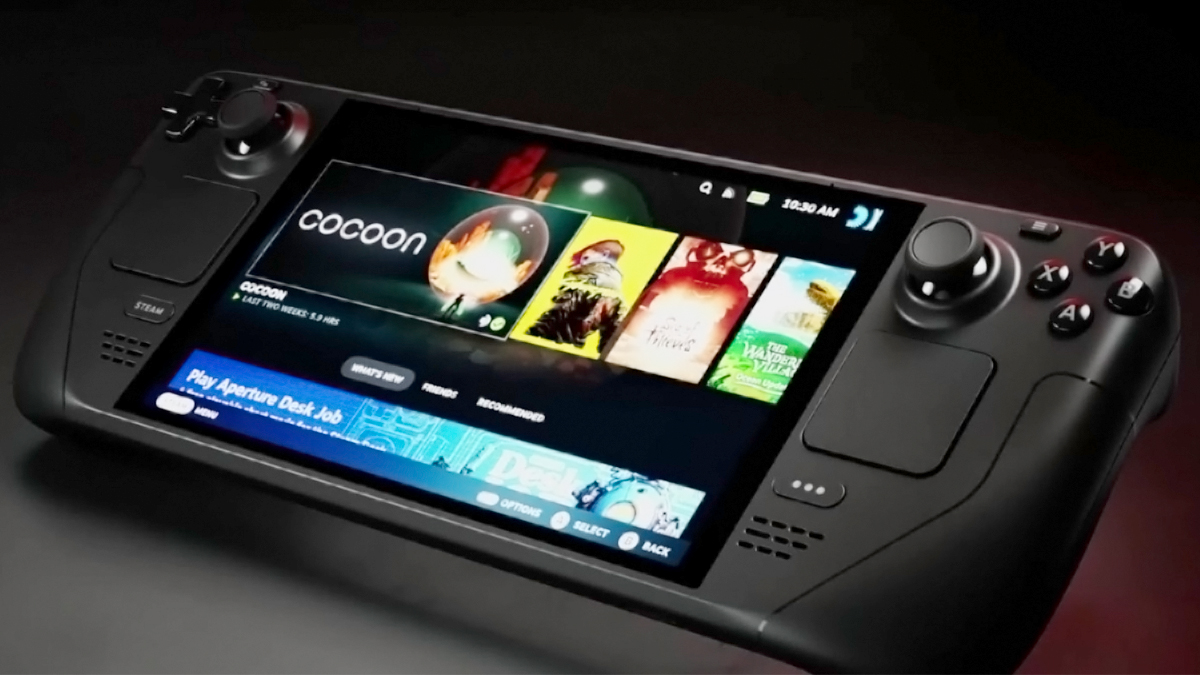
Battery life is another reason, but we’ll touch on that in a later section. Here we’ll add that only the OLED Deck has 512GB and 1TB internal storage options, whereas the Ally is limited to 512GB. Both handhelds can expand their storage via microSD, so this might be a moot point for some. Internal memory is always faster, however, and the 1TB Deck ships with some additional perks, including an etched anti-glare display and a second slim case that fits within the default one. The Ally doesn’t come with a case at all.
Steam Deck vs ASUS ROG Ally: Design and features
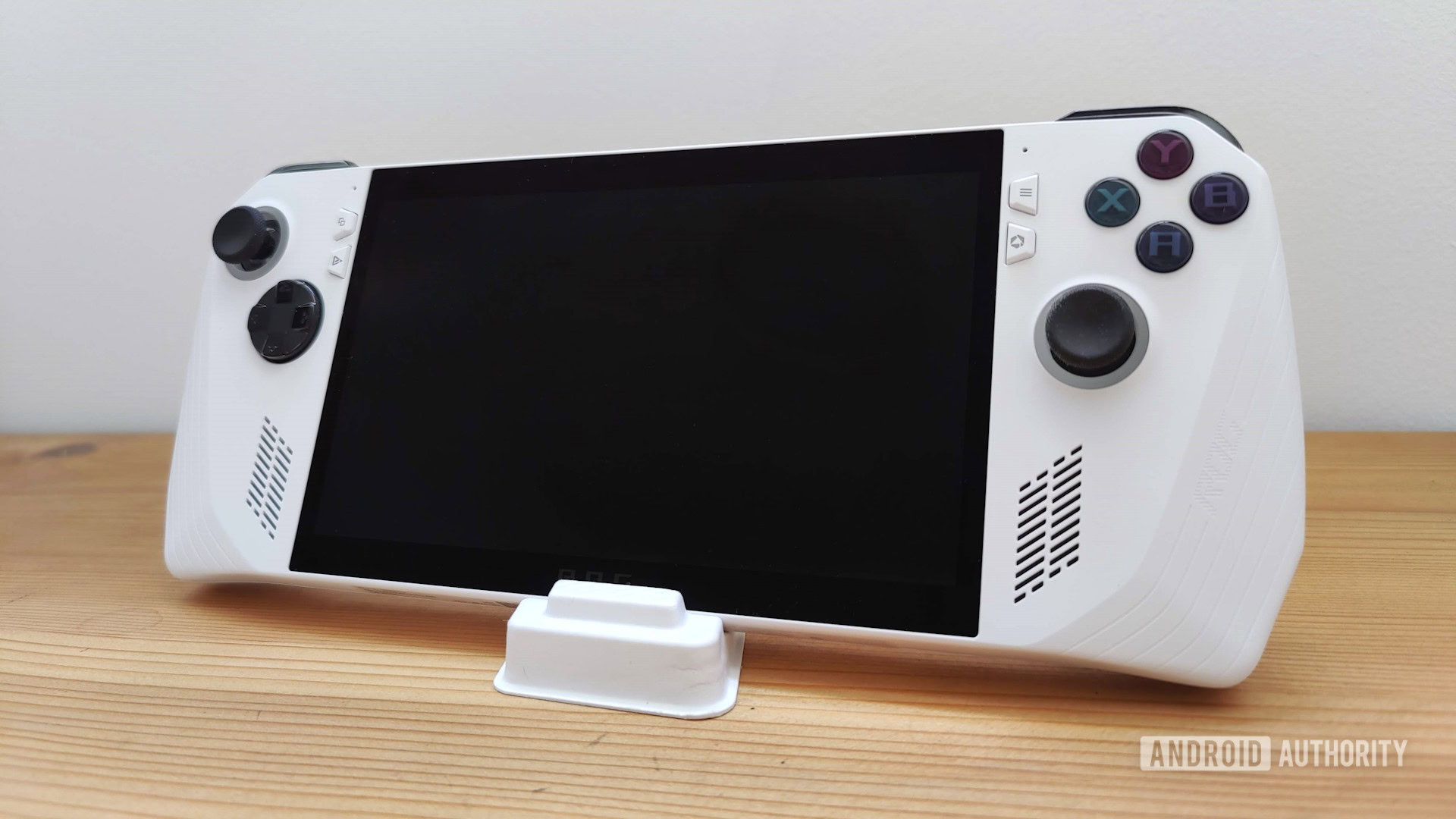
Nick Fernandez / Android Authority
As size and weight go, there are differences, but they shouldn’t be a deciding factor. The Deck is technically 32g heavier than the Ally, but both handhelds are bulky. You’ll want to prop them up on your legs or something else for extended gaming sessions. In fact there are third-party kickstand cases for this reason, and some people have even taken to mounting swing arms where they usually play.
What could be absolutely critical in your decision is software. The Steam Deck runs Valve’s Linux-based SteamOS, which by default can only play games hosted on Steam. Since most Steam games are actually Windows titles, they’re “translated” for the Deck via a compatibility layer called Proton.
That sounds like it would be a recipe for disaster, but in reality a vast number of games have already been optimized for the Deck or play well enough on it, and SteamOS provides a streamlined, “it just works” interface that’s the closest you’ll get to a console like the Nintendo Switch or PlayStation 5. It’s designed for handheld gaming, and it shows. The downside is that you’ll have to use (legal!) workarounds to access apps from non-Steam sources like Xbox Game Pass and the Epic Games Store.
The Ally is a full-fledged Windows PC, but that can be as much a hinderance as a benefit. It’s a benefit in that if something works on an equivalent desktop or laptop, it’ll work on the Ally — that includes not just games like Fortnite (an Epic exclusive) but obscure emulators or even Microsoft Office. Hooked up to a dock, you can make an Ally your only computer.
It’s a hinderance in that while ASUS has custom software for the Ally, it’s not as seamless and omnipresent as Valve’s. You’ll have to tinker with Windows settings occasionally, and deal with intrusions from other apps. Microsoft is working on improving Windows for handheld PCs, but since the company was caught off-guard by the Steam Deck, we wouldn’t expect a solution anytime soon.
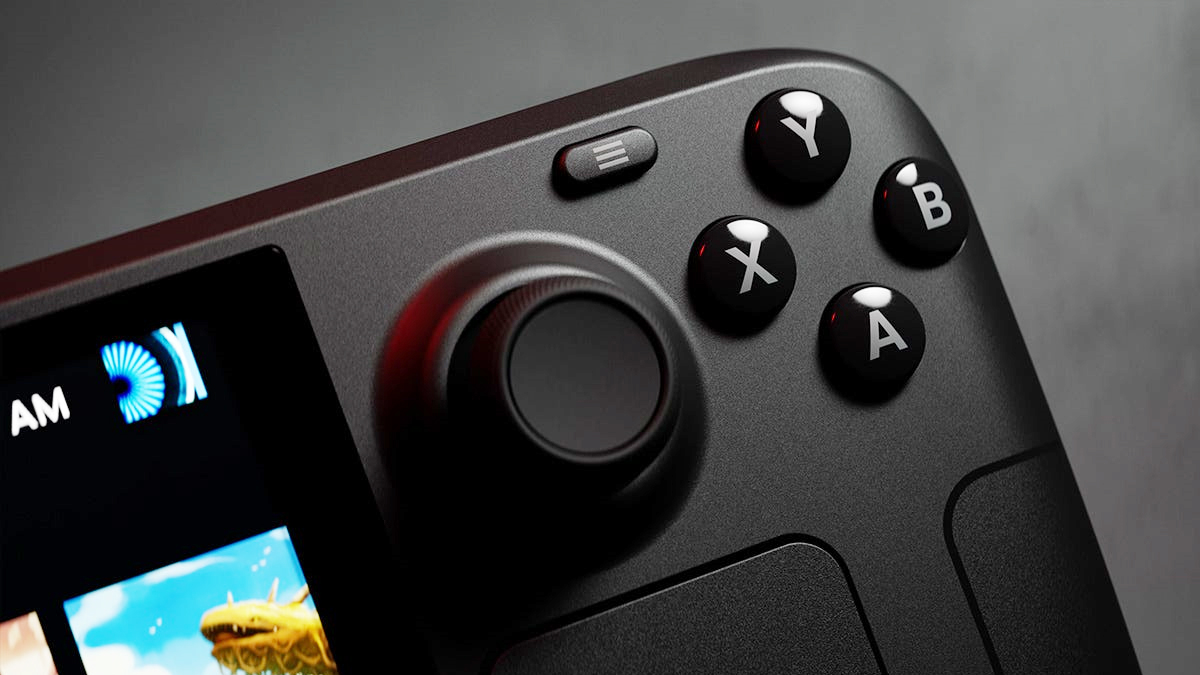
Ironically, it’s the Steam Deck that has dual trackpads on top of the touchscreen, D-pad, gyroscope, analog sticks, and many buttons that both devices share. You’d think at least one trackpad would be warranted on a device with Windows, but instead the Ally forces you to use stick, pad, or touch input at all times unless you have connected peripherals. On top of this some PC games are simply meant to be played with a mouse-like controller, and a tiny trackpad is better than nothing.
Steam Deck vs ASUS ROG Ally: Battery life and charging
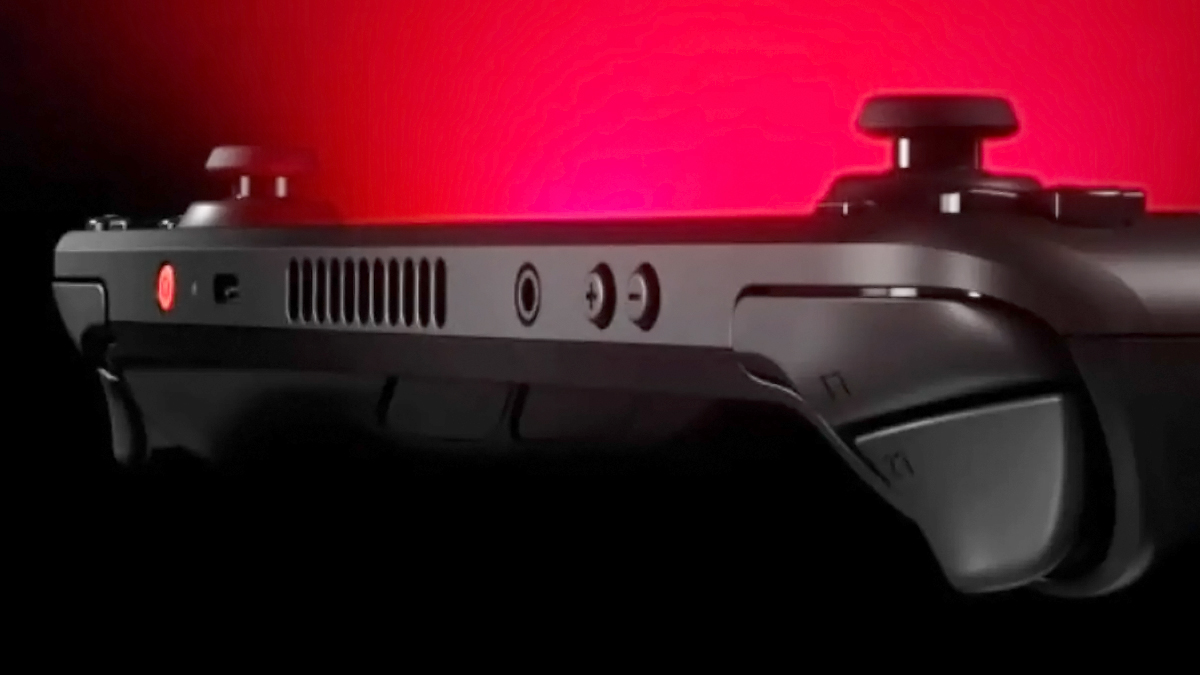
Any portable PC is going to be a power hog, so many people play connected to a USB-C charger when they can. When you’re traveling or otherwise fully wireless, though, the Steam Deck does beat the Ally. Thanks to power-efficient OLED and a 50Whr battery, it can run anywhere from 3 to 12 hours on a charge, depending on the intensity of what you’re doing. You could conceivably play all the way through a cross-continental flight and have battery to spare.
The Ally just doesn’t fare well. ASUS claims up to 2 hours of “heavy” gaming, or alternately 6.8 hours of streaming video content like Netflix and YouTube. That barely counts as portable, so you’ll absolutely need to plug into an outlet or battery pack on long trips. We’re assuming ASUS will be forced to tackle this on its next handheld, partly by making the shift to OLED.
Steam Deck vs ASUS ROG Ally: Price
- Steam Deck OLED (512GB): $549
- Steam Deck OLED (1TB): $649
- ASUS ROG Ally (512GB, Z1 Extreme): $699.99
You’re undoubtedly paying for the extra performance of the Ally, which as mentioned doesn’t even ship with a carrying case. But in its defense, it’s still impressive that you can play something like Baldur’s Gate 3 on any handheld, and the Ally can hit 30fps in that game with medium detail. The Deck can struggle with some triple-A 3D titles.
Steam Deck vs ASUS ROG Ally: Which should you buy?
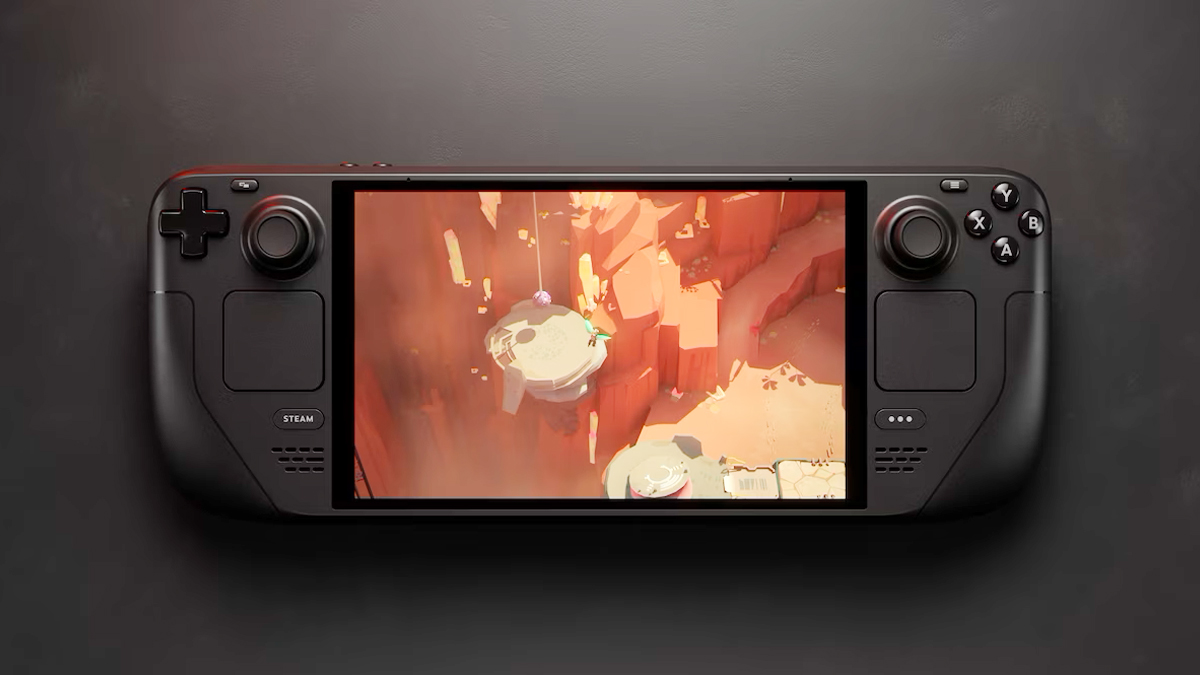
This is a legitimately tough question, but we feel that most people should buy the Steam Deck OLED. It’s less expensive than the Ally, lasts much longer on a charge, and offers the seamless console-style experience you’re probably expecting from a gaming handheld. It’s annoying that you need workarounds for things like Alan Wake or Xbox Game Pass, but the Deck already has a massive community ready to help out there.
The Ally is more ideal for power users. Aside from it literally being more powerful, giving it access to more demanding games, having Windows 11 opens up access to customization and alternate storefronts. If you subscribe to Game Pass or have a substantial non-Steam library, you should probably consider the Ally first, and the Deck only if there’s a dealbreaker like battery life. After all, it hardly matters if a system can play Dead Space if it literally dies on you in an hour or so.
Steam Deck vs ASUS ROG Ally: FAQ
Yes, although you’ll need a specialized dock or some other form of USB-C-to-HDMI connection. You’ll want to use HDMI 2.1, or at least HDMI 2.0.
Both handhelds offer microSD slots. You can also upgrade their internal SSDs, but that process is delicate, technical, and more expensive. ASUS does have official instructions, interestingly. You’ll have to search for Steam Deck guides.
Yes. The Ally supports the Epic Games Store natively, and the Steam Deck can handle it using Proton. Check out these instructions from Polygon.
Yes, each has a microSD slot. It’s worth noting that the Ally has a faster UHS-II slot, but you shouldn’t be hampered much by the Deck’s UHS-I speeds.



